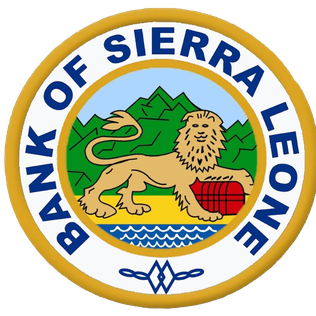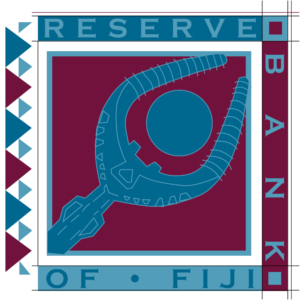
The Bank of Spain is Spain's central bank and the Spanish member of the Eurosystem and has been the monetary authority for Spain from 1874 to 1998, issuing the Spanish peseta. Since 2014, it has also been Spain's national competent authority within European Banking Supervision. It was originally established by Charles III in Madrid in 1782, as the Banco Nacional de San Carlos, and took its current name in 1856. Its activity is regulated by the Bank of Spain Autonomy Act. The bank doesn't translate its name to English but uses its Spanish name in all English communications.

The Central Bank of Brazil is Brazil's central bank, the bank is autonomous in exercising its functions, and its main objective is to achieve stability in the purchasing power of the national currency. It was established on Thursday, 31 December 1964.
The colón was the currency of El Salvador from 1892 until 2001, when it was replaced by the U.S. dollar during the presidency of Francisco Flores. The colón was subdivided into 100 centavos and its ISO 4217 code was SVC. The plural is "colones" in Spanish and the currency was named after Christopher Columbus, known as Cristóbal Colón in Spanish.

The Bank of Sierra Leone is the central bank of Sierra Leone. It issues the country's currency, known as the Leone. The bank formulates and implements monetary policy, including foreign exchange.
The peso was the currency of El Salvador between 1877 and 1919.

The Reserve Bank of Fiji is the central bank of the Pacific island country of Fiji. Its responsibilities include the issue of currency, control of the money supply, currency exchange, monetary stability, promotion of sound finances, and fostering economic development.

The Central Bank of the Dominican Republic was established by the Monetary and Banking Law of 1947 as the central bank of the Dominican Republic, responsible for regulating the country's monetary and banking system. The Bank's headquarters is in Santo Domingo, and its current governor is Héctor Valdez Albizu.

The Central Bank of Paraguay is Paraguay's highest monetary authority, and the country's governing body, in finances and economics. Its headquarters are in Asunción's Carmelitas neighbourhood.

The National Bank of Angola is the central bank of Angola. It is state-owned and the Government of Angola is the sole shareholder. The bank is based in Luanda, and was created in 1926, but traces its ancestry back to 1865. The National Bank of Angola is active in developing financial inclusion policy and is a member of the Alliance for Financial Inclusion.
The Bank of Papua New Guinea is the central bank of Papua New Guinea, which has a core mandate to ensure price stability and maintain macroeconomic growth. To achieve this, it discharges four main functions; 1. responsible for the formulation and implementation of monetary policy, 2. ensure financial system development and stability, 3. ensure the payment system remain efficient, and 4. provide a banking role to the Government. It also manages the country's foreign reserves, issue the country's currency, manages the gold and foreign exchange of Papua New Guinea.

The Central Bank of Costa Rica is the central bank of Costa Rica.

The Central Bank of Ecuador is the central bank of the country, and an institution of the Executive Function, which has institutional, administrative, financial, and technical autonomy. It is in charge of executing the monetary policy established by the Monetary Policy and Regulation Board of Ecuador, which has been the institution's highest governing body since October 2021.

The National Bank of the Republic of Belarus is the central bank of Belarus, located in Minsk. The bank was created in 1922 under the name of "Belarusian Republican Bank" by the Soviet of People's Commissars of Byelorussia, but soon worked under the direction of the State Bank of the USSR. Undergoing reorganizations in 1959 and 1987, the bank appeared in its current form in 1990 after the passage of banking rules upon declaring independence from the Soviet Union.

The Maya Declaration is a global initiative for responsible and sustainable financial inclusion issued by the Alliance for Financial Inclusion that aims to reduce poverty and ensure financial stability for the benefit of all. It is the first global and measurable set of financial inclusion commitments by developing and emerging economies.
The Global Policy Forum (GPF) is organized by the Alliance for Financial Inclusion, or AFI, as the keystone event for its membership and financial inclusion policymakers worldwide. Each year, it is co-hosted by a different member institution in a different region of the world. As of November 2023, AFI had 86 member institutions from over 80 countries, making the AFI GPF the most important and comprehensive forum for regulatory institutions with an interest in promoting financial inclusion policy. The AFI GPF is focused on developing and improving national financial inclusion strategies and policies and is used as a platform for senior financial regulators to exchange ideas as well as engage in peer-to-peer learning activities.

The Alliance for Financial Inclusion (AFI) is a policy leadership alliance owned and led by member central banks and financial regulatory in developing countries with the objective of advancing financial inclusion.

The economy of Central America is the eleventh-largest economy in Latin America, behind Brazil, Mexico, Argentina and Colombia. According to the World Bank, the nominal GDP of Central America reached 204 billion US dollar in 2010, as recovery from the crisis of 2009, where gross domestic product (GDP) suffered a decline to 3.8%. The major economic sectors are agriculture and tourism, although the industrial sector has shown strong growth, mainly in Panama.

Eusebio Rafael Camilo Abreu is a sociologist, historian, economist and politician from the Dominican Republic. He was General Director of the Customs Office of the Dominican Republic and member of the Economic Cabinet during the last presidency of Leonel Fernández. He was appointed Superintendent of Banks in August 2012, by President Danilo Medina Sánchez, retaining this post until 15 September 2014.

Mario Marcel Cullell is a Chilean economist who has been serving as Chile Minister of Finance since 11 March 2022. He previously served as Governor of the Central Bank of Chile. He was named Governor in December 2016 and member of the Bank's Board from October 2015. He has been a close collaborator to the governments of the centre-left Coalition of Parties for Democracy (1990–2010), and for six years held the position of Budget Director, where he played a key role in the design of the structural surplus rule.
















